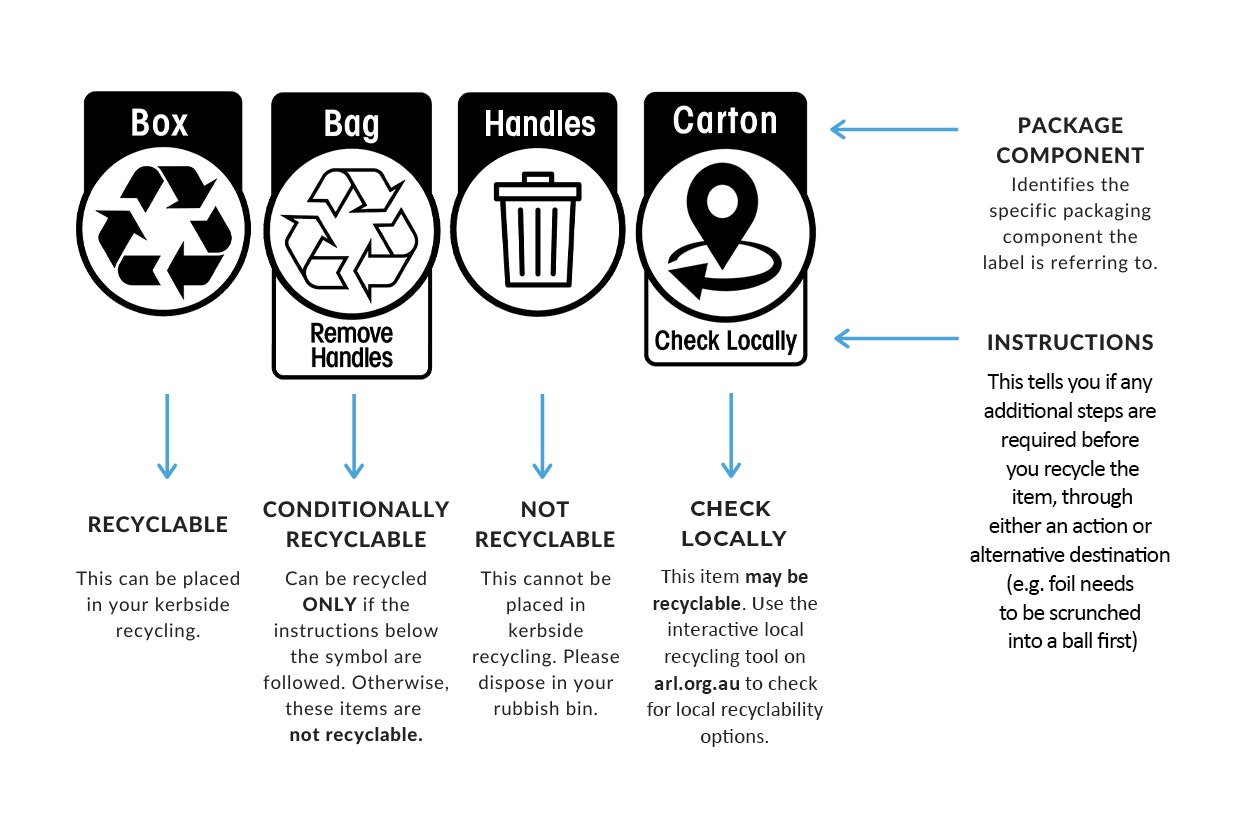do you want to view
Recycling 101: ARL: The Australasian Recycling Label
The Australasian Recycling Label (ARL) provides on-package recycling instructions to help everyday consumers in Australia and New Zealand to recycle better and make more informed decisions. To use the ARL labels, the manufacturer must go through the Packaging Recyclability Evaluation Portal (PREP), an evidence-based assessment of their materials and how the product will perform through the whole recycling process - availability of recycling programs, the technical recyclability and processing.
While it began as the Australian Recycling Label it is now called the Australasian Recycling Label and is applied in both Australia and New Zealand.
Reasons we love the ARL:
- Authenticated Claims: Only verifiable claims earn the ARL mark.
- Clear Instructions: The labels provide straightforward, easy-to-follow recycling guidelines.
- Specificity: Each label offers detailed information about the product and its components.
- Transparency: Manufacturers can’t hide behind vague or misleading claims of recyclability.
ARL Background
ARL was founded in 2018 by the Australian Packaging Covenant Organisation (APCO) in collaboration with Planet Ark and PREP Design - their goal was to simplify recycling instructions and provide a standardised approach to packaging disposal.
While the ARL started in Australia, it’s now used in New Zealand as well. This makes a lot of sense as we share a lot of products. With New Zealand standardising curbside recycling collection in 2024, this is now accounted for in the recycling labels.
Since launching in 2018, ARL has recorded an impressive 330,000 SKUs across Australia and New Zealand with their recycling instructions.
Understanding the Labels
The labels are simple to understand and will break it down into the different components of a product. A single product may contain multiple pieces with different outcomes. The example below from Planet Ark’s Recycling Near You platform breaks down the different parts of a label.

While these labels apply across Australia and New Zealand, recycling isn’t the same everywhere so how does this work?
After the PREP assessment confirms technical recyclability, they measure the percentage of councils that accept the materials and categorise them from there. As you can see in the infographic below:
- if 80% or more of the population or more have access to a standard recycling program for the material it’s designated recyclable
- If 60 - 80% of the population can recycle the material it's labelled “check locally”
- If less than 60% of the population can recycle it, it's marked not recyclable

What about the 50% that can recycle it?
The cut-off for being recyclable being so high might mean recyclables end up in landfill, if you know your council accepts the material we highly recommend you follow their guidance.
However, recycling is endlessly confusing, and the on-package instructions are an important part of reducing contamination and increasing recycling for the general population. Furthermore, with increased consumer pressure around single-use materials, the ARL functions as an accountability measure for manufacturers. The fact is that if it’s not universally accepted, it’s likely a low-quality material with limited options after recycling – like soft plastics or polystyrene
By having manufacturers clearly communicate which materials are recyclable and which are not they’re more likely to invest in more commonly recycled materials supporting a circular economy. For example, we know that #1 PET is widely accepted and can be recycled back into the same kind of products - soda bottles to fruit pottles – however some manufacturers continued to use #6 Polystyrene for juice bottles. This contaminates recycling streams and confuses consumers where a suitable alternative exists.
In summary, the ARL is a transformative tool for consumers and manufacturers. It’s driving transparency, accountability, and improvement in material selection across Australasia and we support more brands introducing the label.